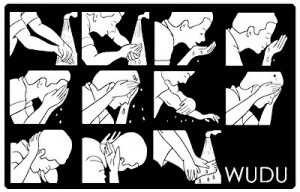A State of Emergency
Reply
Bringing my kids on campus can often turn out to be quite the experience. Like that time I brought my then 3 year old daughter and 1 year old son to accompany while I ran a few quick errands. As soon as we arrive, the 3 year old begins: "Mommy, I have to poo". So we begin the search for a single user washroom. With the two of them in tow, I figured that the privacy and extra space of a single user washroom would make things easier. And so, after some searching, we find one. By then she “really” has to go, and we barely make it in time. As I am assisting her with her business, the one year old starts toddling around the washroom. His first stop: toilet paper roll. His first job: unraveling it. I stop him before he’s done with the roll. A few seconds later, he is licking the outside of the sink. I yell out a NO! and lunge to stop him, almost dropping my daughter inside the toilet bowl (I had been holding her tiny body until then). Luckily, she doesn't fall in. As I washed her hands, I made the mistake of thinking to myself: ”what else could possibly go wrong?” And just then my son finds a shiny yellow strip on the wall and… presses it (the emergency alarm, that is).



